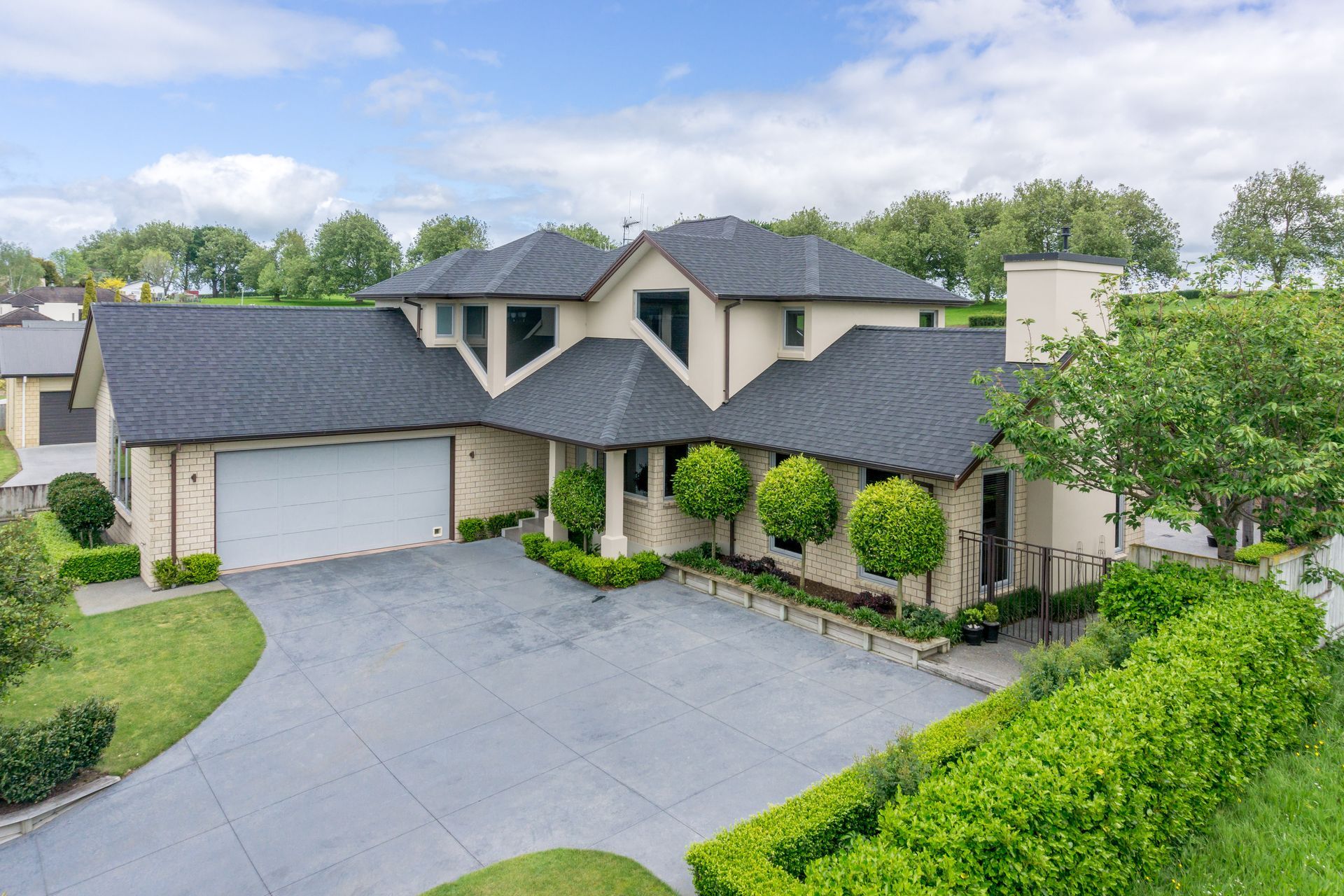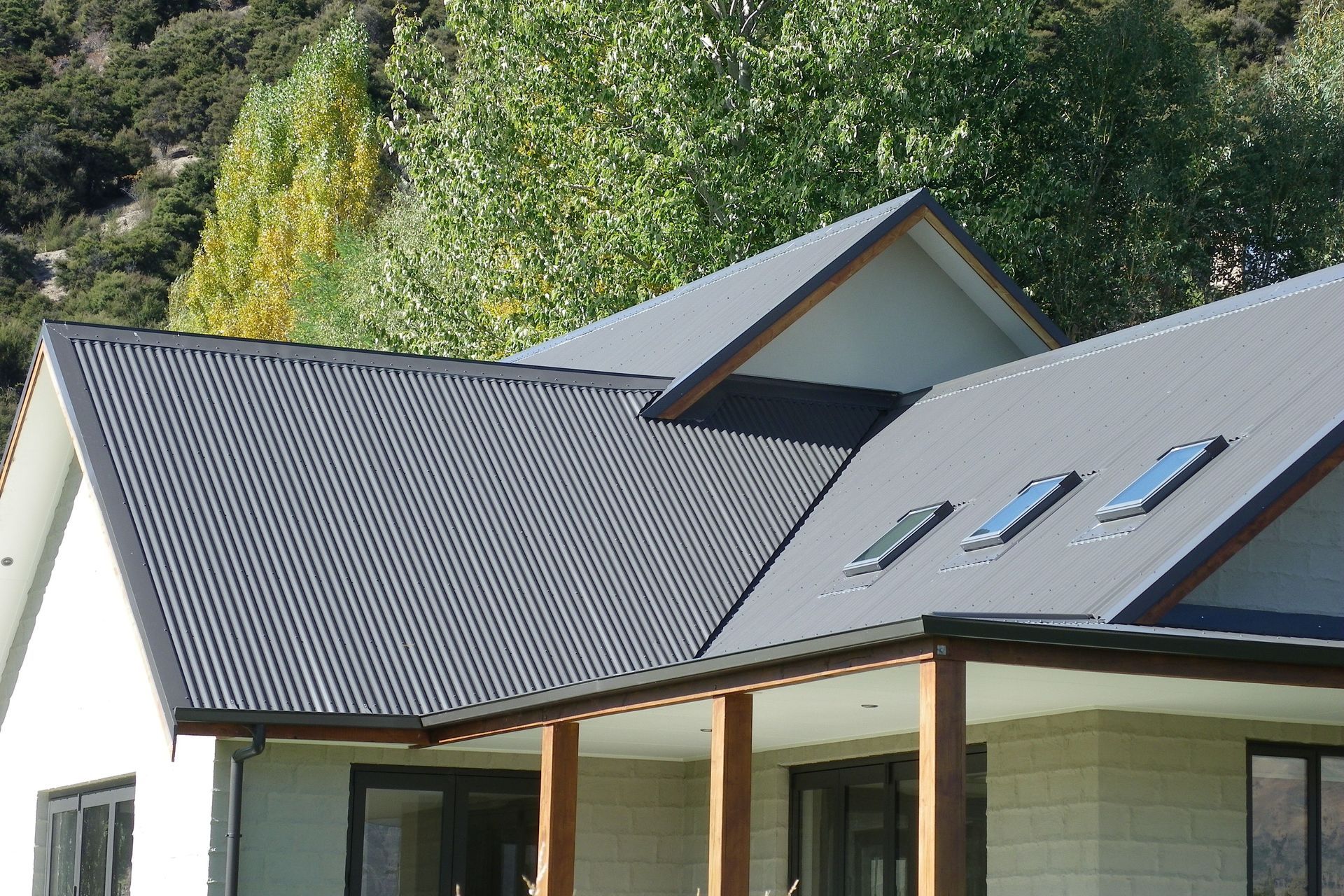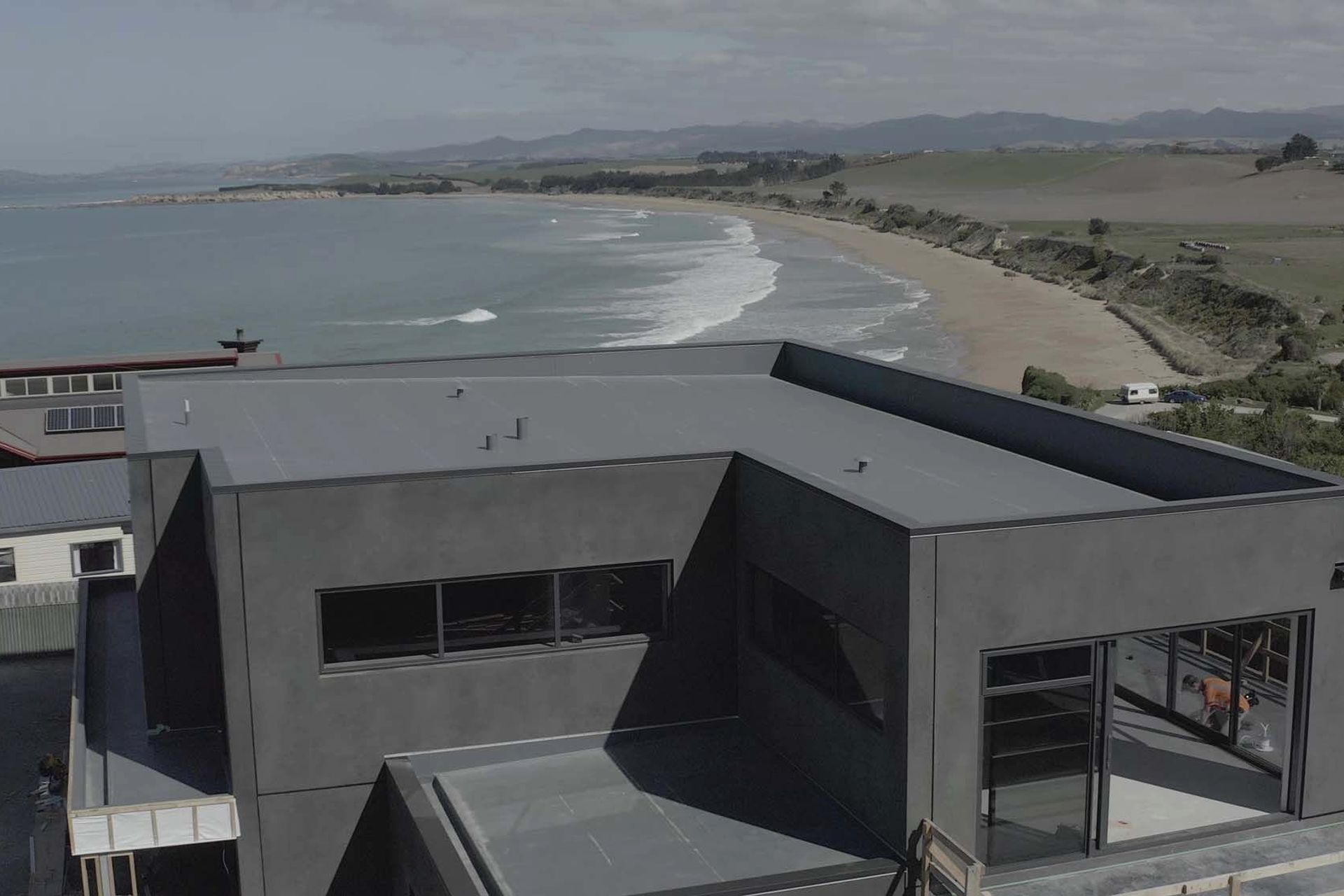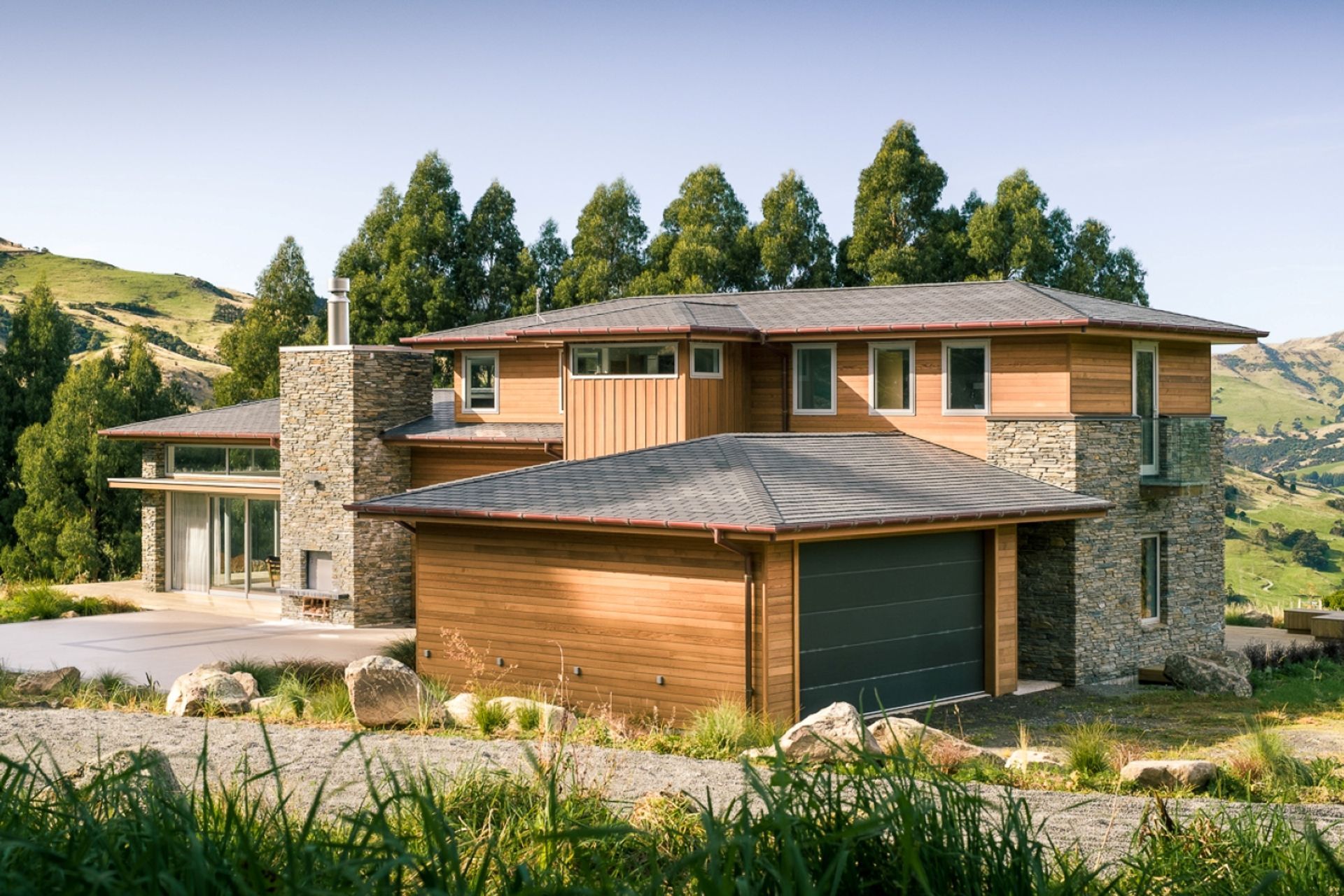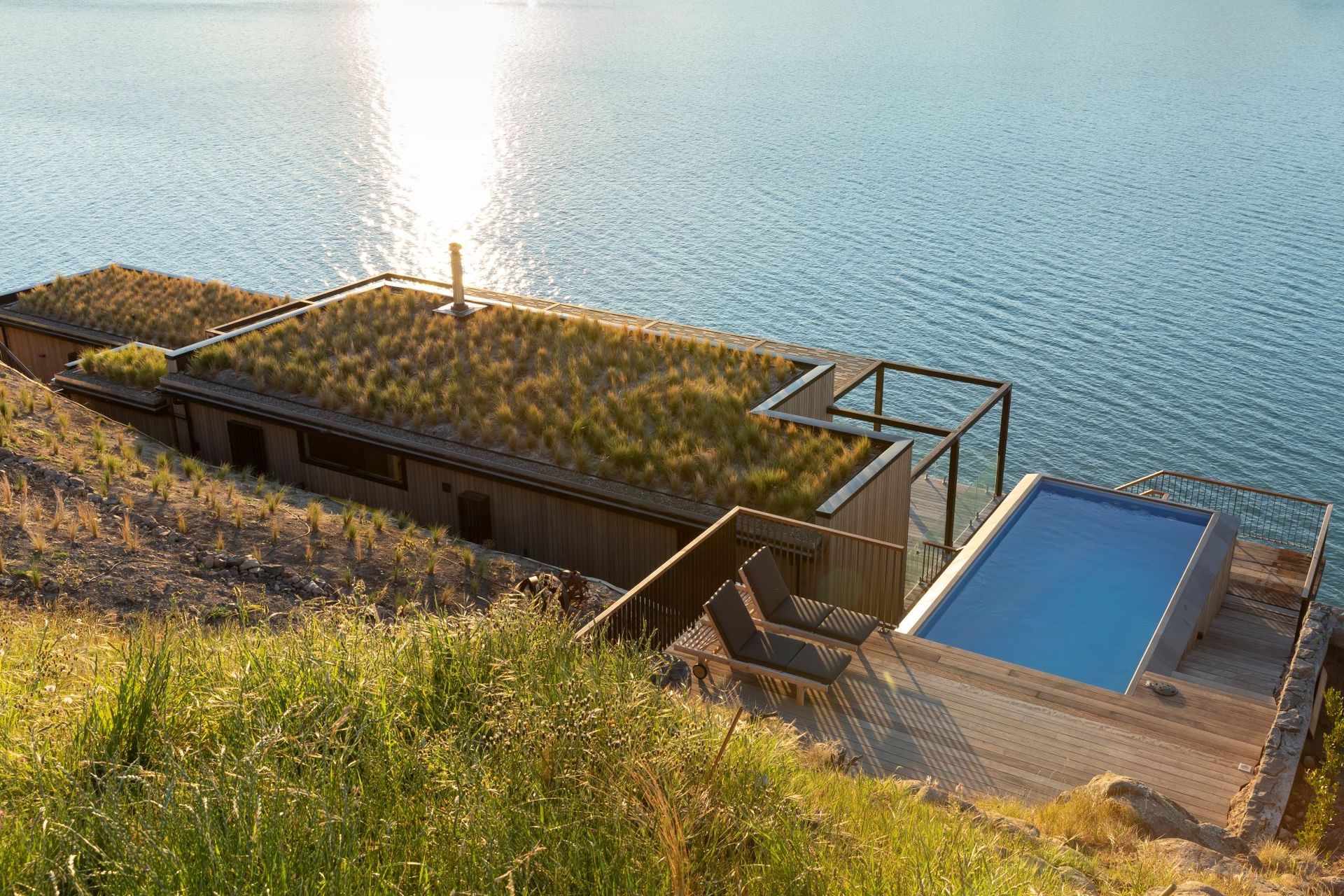Different types of roofing materials: which is best for your needs?
Written by
15 May 2020
•
11 min read
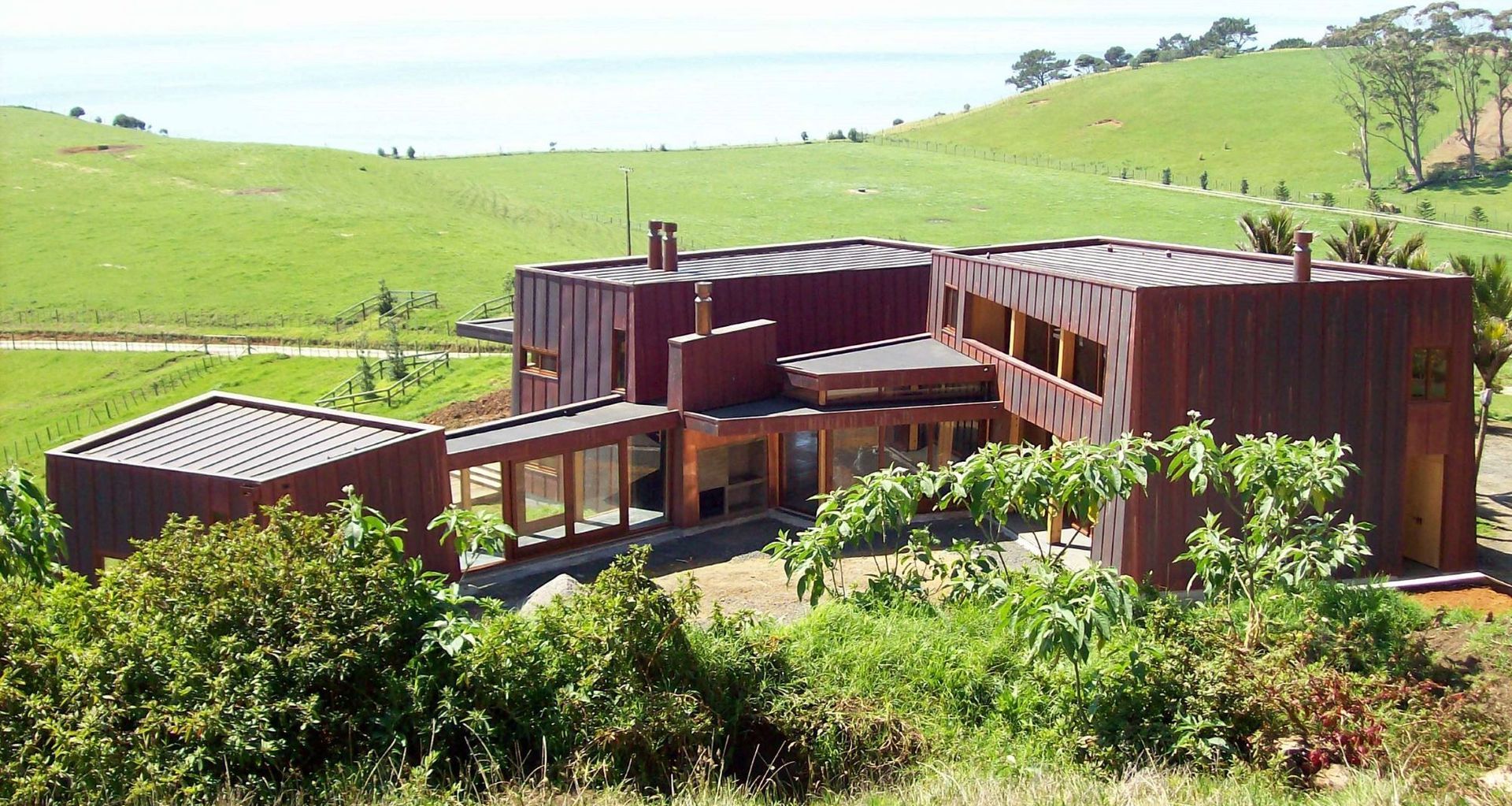
There are a number of factors involved in choosing the right roofing material for your home — climatic conditions, architectural style, personal taste and of course, cost. In New Zealand, there are a variety of roof types to choose from including asphalt shingles, concrete tiles, copper, long run steel and more and each has its place and purpose depending on your needs and the situation at hand.
1. Aluminium roofing
Aluminium roofing is not the most common type of roofing on the market but it is one that is becoming increasingly popular, especially with contemporary-styled homes.
For a metal roof, it's incredibly lightweight, easy to transport and work with. It's also very versatile from a shaping and design perspective making it a preferred choice for architects with creative design goals.
Its corrosion resistance also makes it appealing, especially for homes in coastal regions and the fact that it's recyclable gives it strong environmental credentials.
Aluminium roofing can be a bit more costly than other solutions as a slight drawback and it can expand and contract with big temperature changes, requiring professional roofing installation to mitigate this.
Browse the latest aluminium roofing products in New Zealand on ArchiPro
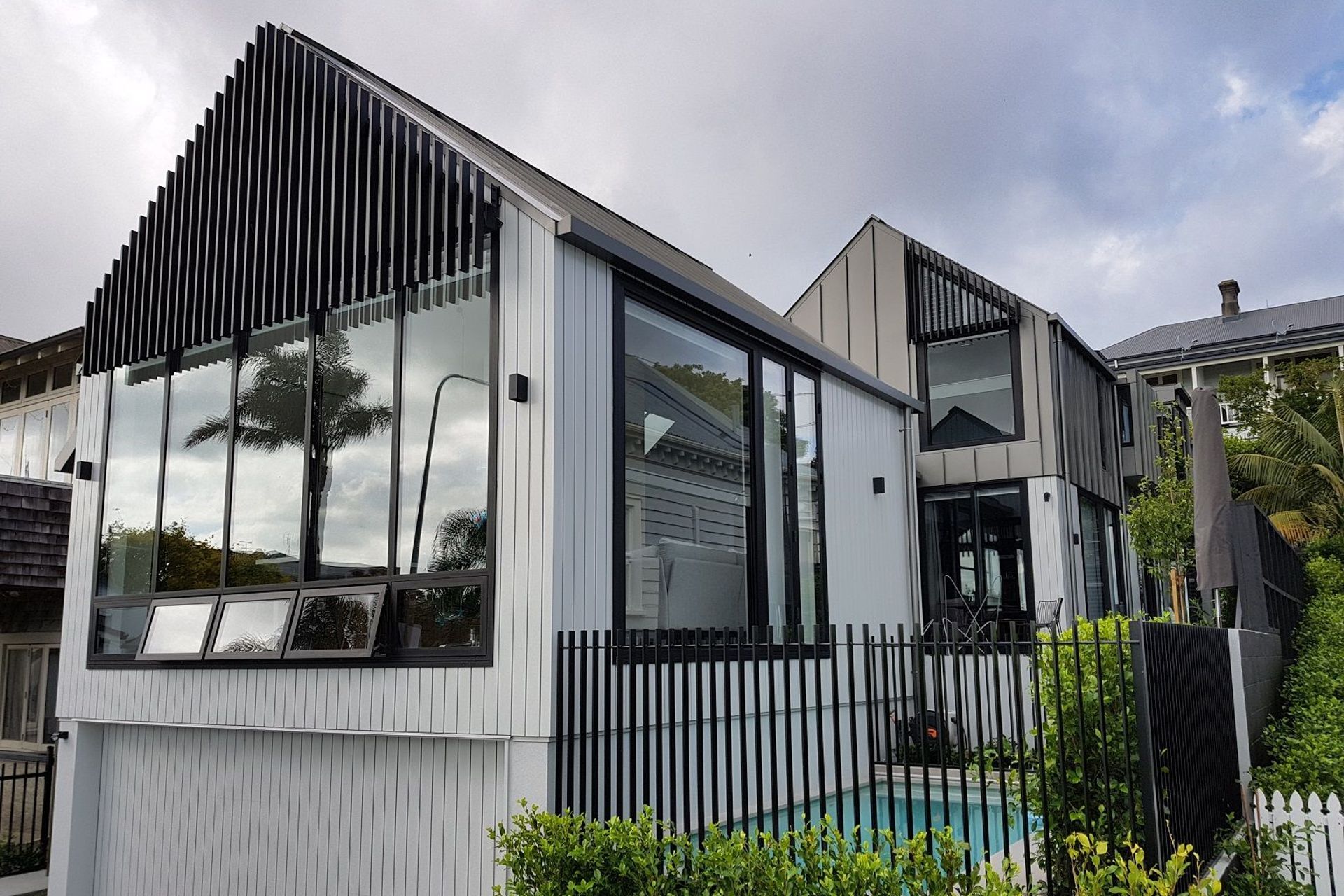
2. Asphalt shingles
Asphalt shingles are a popular roofing material in New Zealand having had a presence here for around 40 years. Internationally though, asphalt shingles have been a prolific choice for more than a century.
There are two types of asphalt shingles that are commonly available here — organic and fibreglass. Organic shingles have a base layer made from waste paper, cellulose or wood fibres that are impregnated with asphalt and then have a top layer of asphalt applied. Fibreglass shingles have a base layer of fibreglass that is bonded together with a urea-formaldehyde resin.
Asphalt shingles come in a variety of colours and patterns making them a visually appealing choice. While fibreglass options offer high fire resistance, both are durable choices that require little ongoing maintenance. They are also fairly good in windy locations though you'll find some that have been specially designed for use in extreme high-wind zones.
On the downside, while they are durable, asphalt tiles will deteriorate over time and can require replacing sooner than some other roofing options. Also, some organic tiles made prior to the 1980s may contain asbestos so it’s best to check this if you’re planning to buy an older house. As the tiles age, they will shed their granule coating, which could lead to water ingress issues.
Discover a great range of high-quality roof shingles on ArchiPro
3. Clay tiles
The first known clay roofing tile can be traced to China some 12,000 years ago, making it one of the oldest man-made roofing materials around. With such a long history, it’s no wonder they are widely adored and adopted in homes everywhere.
There is no denying the kerb appeal of a house with a classic terracotta clay tile roof especially on a Spanish Mission or Mediterranean-style home. They are very durable and fire and insect resistant. They are also recyclable at the end of their lifespan.
On the downside, clay tiles are a heavier roofing option, requiring extra structural support, which may add to your project's construction costs. They can also break if walked on requiring a bit of care when cleaning or working on other parts of the roof.
Find the perfect terracotta roof tiles for your home on ArchiPro
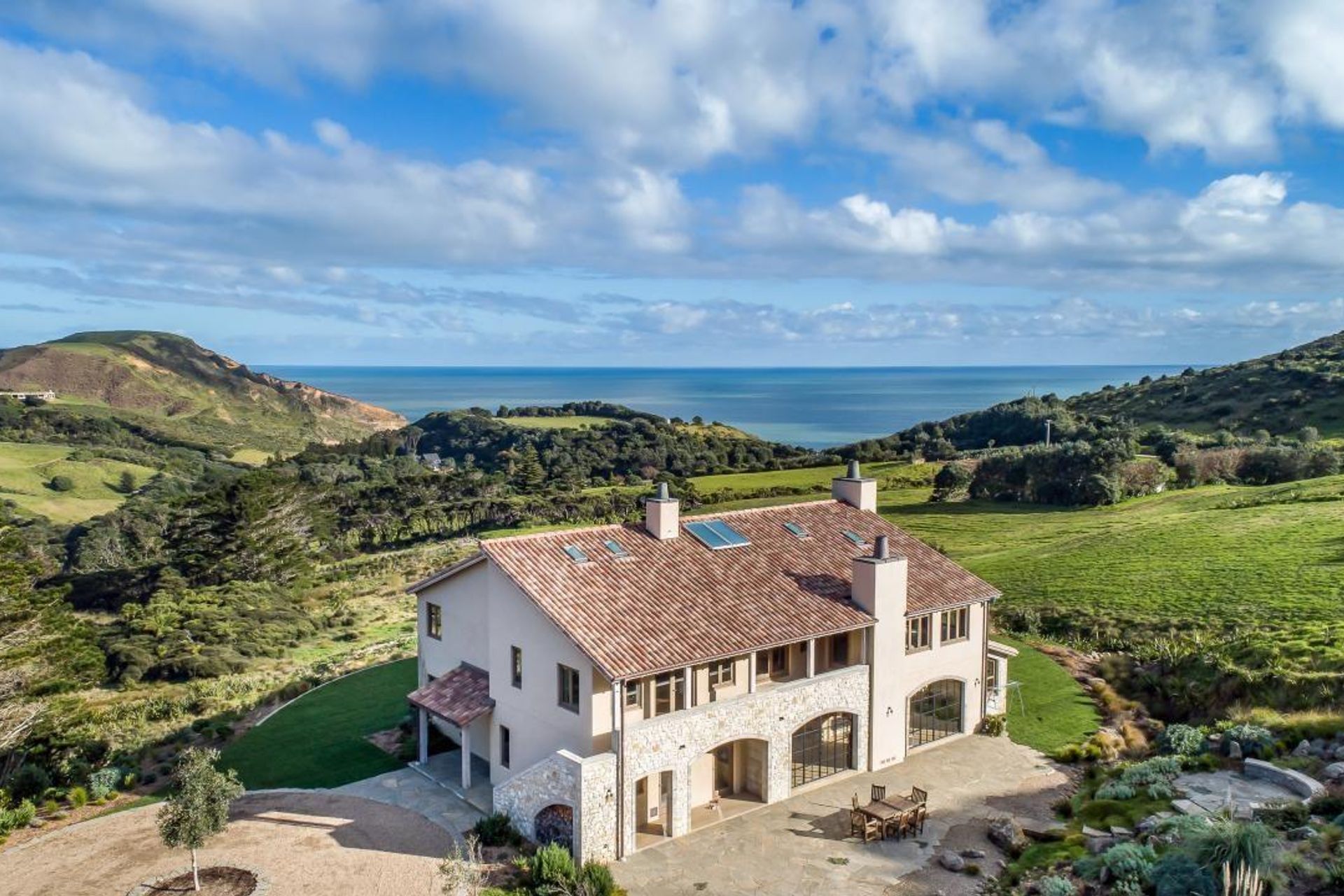
4. Concrete tiles
A concrete tile roof is a common sight to see in New Zealand and is a great one to consider for your roofing project.
They are a low-maintenance and durable choice that stands up well to local conditions. They also offer fantastic longevity with the ability to last decades — over 50 years in some instances.
They also boast strong fire resistance and offer good thermal insulation, keeping your home cooler in the summer and warmer in the winter.
They are heavy so require good structural support, though manufacturing advancements have also resulted in lighter and more durable products also being introduced.
Browse a quality selection of concrete roof tiles on ArchiPro
5. Copper roofing
Considered by some as the Rolls Royce of metal roofs, copper roofing has been used for hundreds of years being one of the most durable metals there is. Few materials offer the aesthetics of copper, with its natural patination, making it a design statement for the most contemporary of architectural designs.
Unlike some metal roofing, copper will never rust or corrode — making it ideal for coastal applications without the need for special coatings or finishes. Copper is highly recyclable with most products containing at least 75 per cent recycled content.
On the downside, copper is a very soft metal, which means it can be dented by hail and the like. Copper is also susceptible to fluctuations in temperature and has a tendency to expand and contract, which, if not properly installed, can lead to water ingress issues.
Find inspiration in a curated collection of copper roofing solutions on ArchiPro

6. Corrugated iron and long run steel roofing
While the term corrugated iron is a bit of a misnomer these days (it’s been made from steel for more than a century) it is a Kiwi icon and has graced many a shed and home across our fair nation. Its durability is renowned and advances in technology have seen the introduction of many different styles and finishes.
Steel roofing is easy to install, offers a high performance-to-weight ratio, suits just about every architectural style, is recyclable at the end of its lifecycle and can easily stand up to our changeable weather.
On the downside, steel roofing will dent when hit hard enough by something, marring its appearance and leading to leaks around seamed areas. Similarly, if installed improperly you’re likely to encounter problems around water ingress and your roof could lift off in high-wind situations.
Related article: A deep dive into contemporary steel roof styles in New Zealand
7. Membrane roofing
Traditionally, membrane roofing products were the domain of commercial buildings but have, more recently, gained a following in the residential market as they are ideal for use on flat or low-pitched roofs. There are five major types of membrane roofing — thermoset, thermoplastic, modified bitumen, glass-reinforced plastic and liquid.
Depending on the type of membrane roofing you choose, there are various benefits but as a general rule, they all offer good performance-to-weight ratios, are easy to install by specialised contractors and offer high levels of aesthetics.
On the downside, some thermoset and thermoplastic products have been known to permit water pooling or water ingress if not installed properly or not maintained. Similarly, these products have been known to suffer punctures so care needs to be taken when inspecting the roof or carrying out repairs to other roof structures.
Related article: What are the different types of cladding? A complete guide
8. Slate shingles
If you’re wanting to make a wow statement with your roof, few options outshine a slate shingle roof which looks great and can actually increase its resale value. The natural tonal variations in slate make it an extremely attractive choice and it can be used with a variety of architectural styles.
For durability, slate roofing is hard to beat which is why it's often called a "lifetime roof" with centuries-old buildings across Europe still sporting their original shingle roof. Slate shingles require little to no ongoing maintenance and can be reused or recycled numerous times.
On the downside, slate shingles are the heaviest of the roofing options and will require proper structural support. Slate shingles should also only be installed by a specialist slate roofing contractor, so make sure you get the right person for the job. Slate shingles can break if walked on so some care is required during maintenance and cleaning.
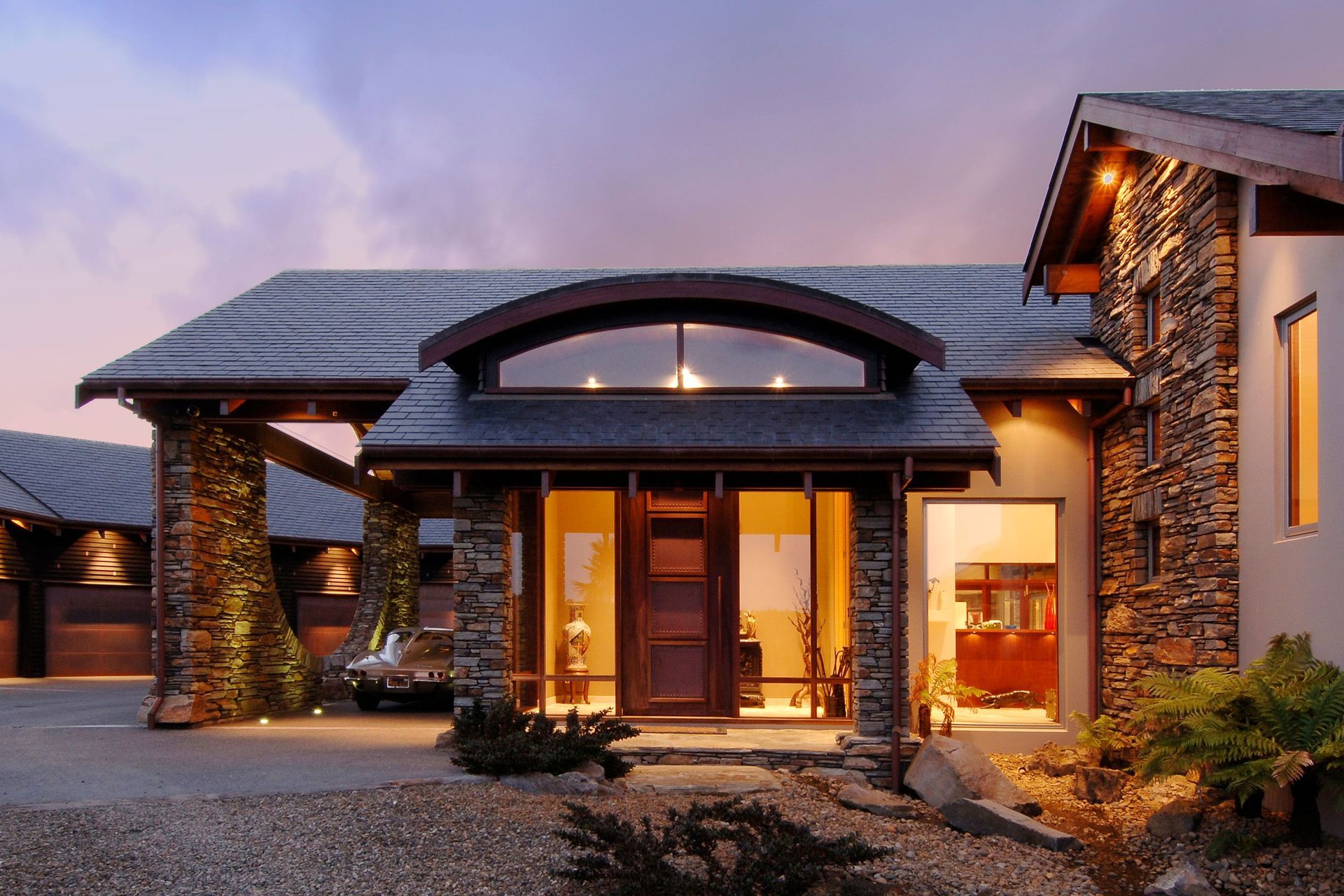
9. Solar tiles
Solar roof tiles, sometimes referred to as solar shingles or photovoltaic (PV) roof tiles, are designed to harness solar energy to generate electricity while blending seamlessly with other roofing materials.
Because of their ability to resemble other types of materials, they make a very aesthetic choice, especially when compared to traditional solar panels.
To the obvious point, they also make your home much more energy-efficient, providing electricity from a sustainable source, the excess of which can be fed back into the grid.
They are quite an expensive option to invest in with respect to upfront costs but you do claw much of that back with lower electricity bills. Professional installation is also essential from an experienced solar panel installer.
10. Synthetic slate shingles
Synthetic slate roofing is an alternative to slate shingles that have similar aesthetics but are a much lighter weight making them easier to work with.
They are typically made from composite materials consisting of polymers, rubbers and other recycled materials. As a result, they are often more cost-effective than other roofing materials including natural slate.
They are reliable and robust, holding up in a variety of environmental conditions making them great for most regions in New Zealand.
The UV resistance can be a little variable, depending on the quality of the product you choose which in some cases can lead to fading, leading to a drop in aesthetics. As with most roofing material types listed here, professional installation is also highly recommended.
11. Wood shingles
Wood shingles are a natural and aesthetically warm choice that are typically made from cedar or pine giving great rustic vibes to a home.
Derived from a renewable resource, they are a eco-friendly and sustainable choice that when properly maintained can last anywhere from 20 - 50 years.
They are a great insulator and are resistant to most types of weather, especially when treated with preservatives.
This type of roofing requires maintenance, however, with regular cleaning and treatment to preserve its lifespan. Some areas in New Zealand may also have restrictions on the use of wood shingles due to the potential fire risk involved, although this can be mitigated somewhat with treatments.
Related article: Reroofing the Christchurch Yacht Club — A ColorCote® community support project
12. Zinc roofing
A zinc roof is a niche choice in New Zealand but one that is more widely known and embraced as a suitable solution for roofing in our country.
Zinc is incredibly robust, offering a great lifespan of anywhere from 50 - 100 years when properly installed and maintained. It also has strong anti-corrosion properties making it another great choice for any house by the beach.
It also has a unique aesthetic quality, starting out with typically a grey matt finish that slowly develops a natural patina over time. This patina also gives it greater protection making it a low-maintenance choice too.
Zinc roofing is considered a premium option in the market so requires more of an upfront investment than many others on this list. The patina aesthetic may not appeal to all either and the natural process of it happening can take a few months to years, though this can be accelerated with chemicals.
Browse a curated selection of zinc roofing solutions on ArchiPro
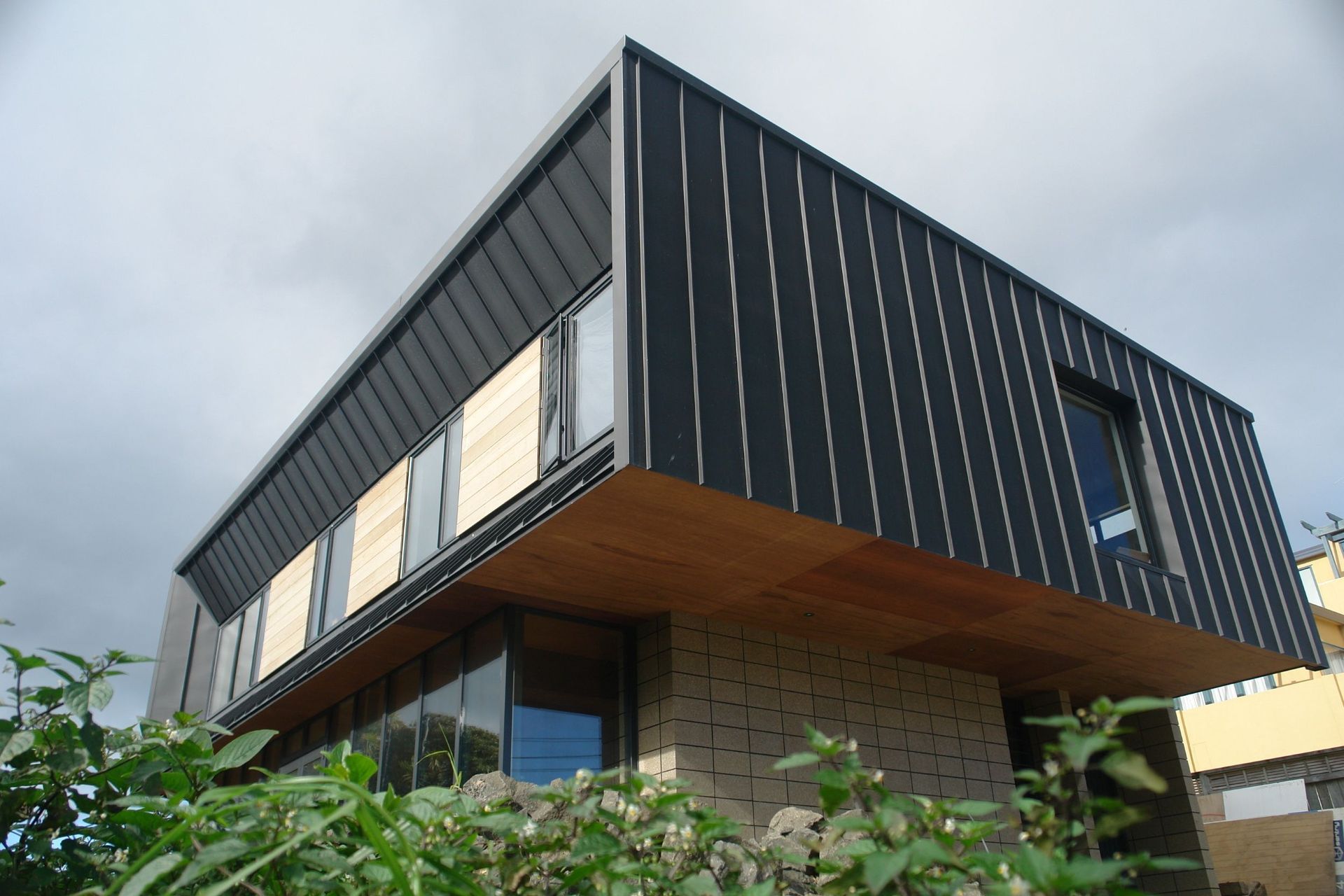
13. Green roofs
Green roofs, also known as living roofs, get the final mention on this list as a unique type of roof unlike any other you'll find across the country.
A green roof essentially consists of a flat surface, covered with vegetation including grass and plants (and sometimes small trees) that provides a wide range of social, economic and environmental benefits.
Some of these benefits include better stormwater management, excellent insulation, improved air quality and noise reduction.
However, a green roof does come with greater responsibility in terms of upkeep requiring the same levels of nurturing as a regular garden does. They can also be expensive to install and require good structural support given the weight of the soil and plants.
Related article: Green building trends shaping the industry, our homes and workplaces in New Zealand
An extensive range of roofing materials to consider
As you can see, there are some great options for roof materials in New Zealand, each with its own qualities, strengths and benefits. Whether you're looking at steel roofing for an urban dwelling in the city or a clay tile roof for a suburban bungalow, you'll find something that meets your needs and serves you well for many years to come.
Browse hundreds of high-quality roofing products on ArchiPro
